Build a new home: Australia-proof home defying Mother Nature
This ultimate almost-everything-proof Australian home has been a lifetime in the making.
Property
Don't miss out on the headlines from Property. Followed categories will be added to My News.
Every architect seeks to familiarise themselves with a site before embarking on a new design but research into the rugged terrain surrounding Morgan Jenkins’ recent Mt Coot-tha project was a lifetime in the making.
He grew up on the steep bush block along with his four siblings — one of whom became his client.
“My parents bought two large blocks that back on to bushland but left part of it because they didn’t want neighbours at the time. It’d always been their dream that their kids might do what my sister ended up doing and build a place there,” he says.
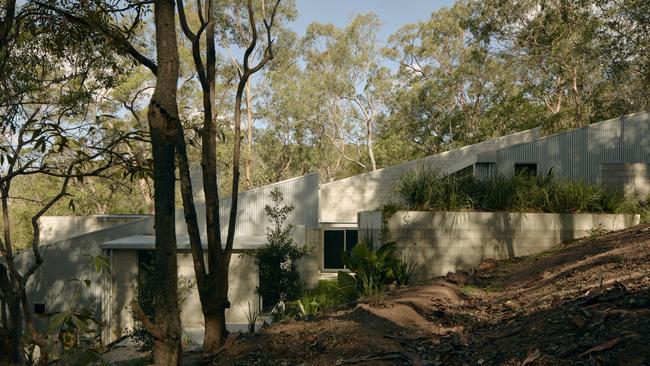
The reality of bushfires had always loomed for the family, but fortunately never materialised.
“I remember my parents buying a submersible pump for the pool, and there was often back burning but nothing came close,” says Morgan.
Nonetheless, he knew his sister would need a home that could brave the elements.
A REAL FEAR OF FIRE
The unique experience of knowing the site and the client so intimately helped Morgan and his business partner, architect Lachlan Nielsen, create a home that is inextricably linked with its environment.
“Most of our work is in suburbia so you’re always trying to introduce a wilderness element to it. This project offered almost the inverse of our usual challenge because we had to find a piece of controlled landscape within a pretty tough environment which is not just steep but can get very dry,” he says.
When the colleagues first began scoping out the site there had been bushfires in the region so the fear of fire was very real.
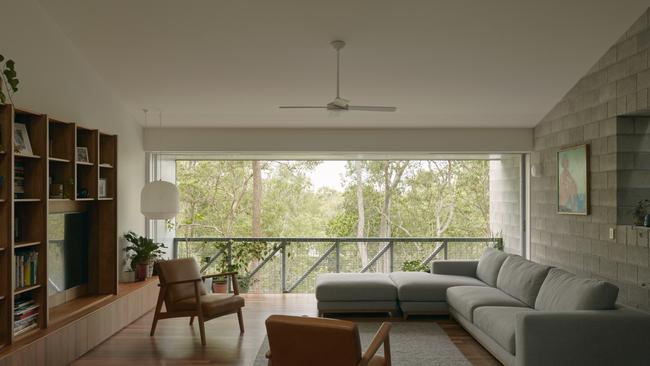
“We actually factored in an extra day with the surveyors so we could all work together and peg out the building, just to make sure it was where we wanted it, and needed it to be,” he says.
The Nielsen Jenkins team had a bushfire consultant visit the block and together they determined the property’s Bushfire Attack Level (BAL) rating, a means of measuring the severity of a building’s potential exposure to ember attack, radiant heat and direct flame contact under the Australian Standard.
The Mt Coot-tha house was subsequently built to a BAL 40, the second highest rating, which brought with it a significant list of requirements to comply with.
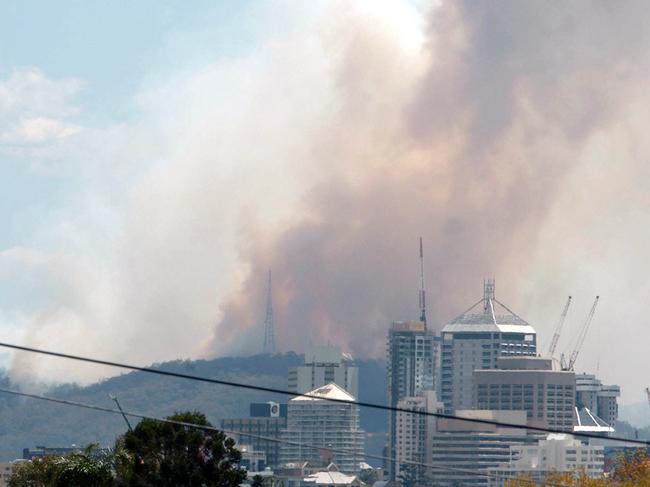
“The materials chosen were influenced by both bushfire and economics.
We made a decision early on that we wouldn’t fight against the bushfire requirements and try and put in a “normalised” house. We just embraced it to create a home that is as functional as possible.”
With no external timber, the home features zinc cladding, tin sheeting and block work.
“Those materials are low cost, but it also meant we didn’t have to paint anything. There’s literally zero external maintenance on that building,” Morgan explains.
He adds that while ticking bushfire safety boxes, he and his team were met with plenty of challenges, but turned them into positives.
“The hardest thing to achieve was the requirement of no more than a 3mm gap around any opening. It required a huge amount of collaboration and commitment from the people putting the place together to achieve anything other than proprietary solutions.
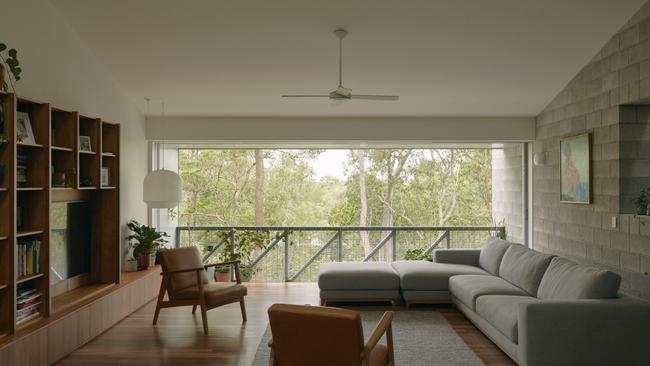
The finest craft in this house is from roofers, cladders and blocklayers, and we have tried to highlight how skilful these guys were.”
Being inventive while following the rules is still achievable in bushfire zone, says Morgan. “You can make something that still works as a good piece of architecture, something that can connect to the outside, allows good ventilation and natural daylight.”
Building within bushfire regulations can be pricey, but he explains they were able to curb costs.
“Although it was a big budget, it certainly wasn’t a crazy budget considering how technically difficult the house is,” he says.
“I’m not saying this was a cheap house, but the per square metre rate, considering the complexities involved, was very reasonable. We’re really proud of it because we put our attention, and vast majority of the money, into creating generous experiences with light and shadow. There’s no decoration, it’s just really stripped back so then when you’re inside, you’re focused on the apertures to the outside.”


ENVIRONMENT DICTATES DESIGN
Morgan says while the harsh environment, especially the dramatic slope, dictated how the finished product would look, there were still ways to incorporate a family friendly layout. “When we started the project, the bush there was really dry, dusty and quite intense so it was about finding a refuge within that while still connecting to the ground for their kids.”
A significant gradient gave them two options; an elevated pole house or working with the slope, and the latter prevailed.
“Just knowing my other siblings with little kids, if your living area is upstairs then you lose contact with the yard. If you’re not adjacent to the outdoors, then the kids can’t be out and active. So, apart from the living room, which is on top of the garage, it is essentially a single-storey home stretched up the site,” he says.
When creating a family home, says Morgan, it’s ultimately the family itself who affect the outcome, just as much as the other elements.
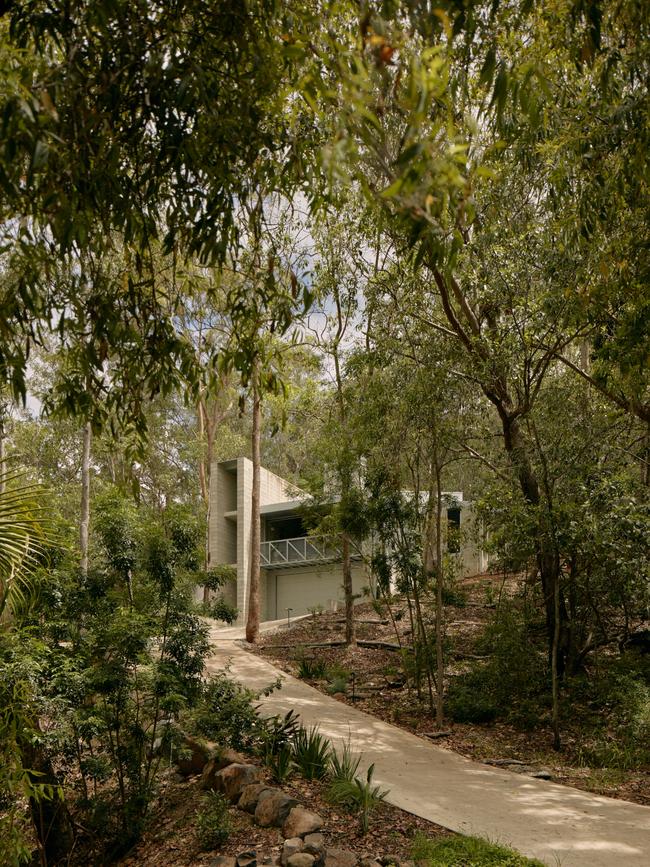
“Everyone brings their own level of input into the cauldron when you’re designing. Bushfires are obviously a really strong input into a design so rather than shrugging that off, we thought let’s just bring it in and let it be a driver. Let’s make it look like a house that’s supposed to be resilient and supposed to be a refuge.”
HOW TO PREVENT HOME FIRES
Don’t leave cooking unattended
One of the leading causes of home fires is cooking left unattended, reports the New South Wales government. If this happens to you, turn off the stove if safe to do so. Leave the kitchen and call triple-0 immediately.
Turn off appliances when not in use
Prevent electrical fires by regularly checking electrical leads for damage, not overloading powerpoints and turning off all electrical appliances at the powerpoint before going to bed. Do the same when you leave home.
Ensure your smoke alarms work
The risk of a home fire fatality is halved if there is a working smoke alarm in the residential dwelling, says NSW Fire + Rescue. It is required by law to have at least one working smoke alarm on each level of your home.
HOW TO COMBAT BUSHFIRES
New homes built in bushfire zones must adhere to strict regulations, but for existing houses it is up to the homeowner to protect their property.
Know the risks
It’s not only direct flames that pose a problem, ember attack too. Most home losses occur where there is sloping land and proximity to native vegetation.

Create a defendable space
A perimeter around the house with low or nonflammable materials is vital to the protection of property and people.
Fill the gaps
Sealing spaces where embers can lodge themselves is imperative. An ember can fly into a gap of just 2mm so cladding and eaves need to be of non-combustible materials.
Work from the ground up
Surround both underfloor spaces and decks with a non-combustible skirt to prevent embers getting underneath, ensure metal roofs are in good condition and tiled
surfaces are crack-free.
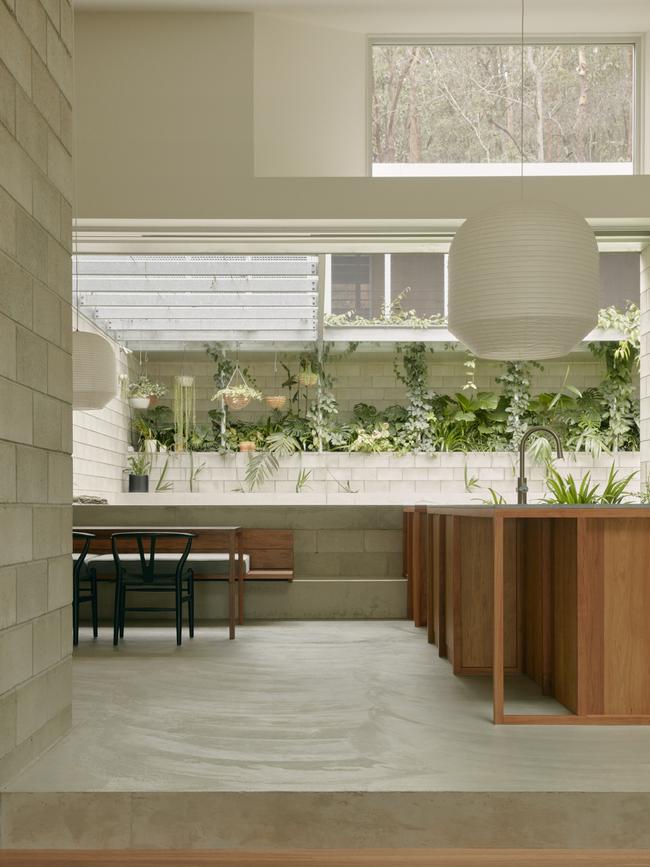
Get tested
Consider getting a bushfire risk assessment done by an accredited assessor to know where you stand.
GARDENING TO REDUCE FIRE RISK
As summer looms, bushfires can cause catastrophic damage and no state or territory in Australia is immune.
For those who live in areas where bushfires are a risk, it is worth considering how your garden design and planting can help reduce fire risk around your home.
Obviously there are many variables, as fires vary tremendously and are unpredictable, and if the fire is hot enough, all plants can burn. However, considering the factors below, will help you give you a guide for how to plan a safer garden.
Sensible design
Working outwards from your house, start with a non-flammable perimeter barrier immediately around your home, like a broad path of paving, concrete or gravel.
Aim to have clear areas on the sides of your home most likely to be affected by fire. Again, these could be paving or gravel, or you could use lawn. Lawns are often viewed as water guzzlers, yet with the new breeds of hardy waterwise running varieties, they don’t need to be. Well-maintained lush lawns help form a great fire break around your home.

If you are sited on the top of a hill, address the slope, as fires travel more quickly uphill, so you need a larger clear, or at least a larger area with plants of low flammability.
Swimming pools and tennis courts can also act as a fire break on the side of your home most likely to be under threat from fire.
As you move further away from your home, have low plants and choose plants which have low flammability, or broad fleshy leaves and high moisture content, such as succulents. While some people in bushfire zones are wary of having any trees near their home, it is more important that you don’t have any overhanging trees or allow your gutters to be filled with debris.
Keeping trees at a safe distance from your home (approximately one to one-and-half times their mature height) and choosing the right tree, can help you as trees can protect your home from radiant heat and ember attack.
Avoid planting trees with high oil content in their leaves (such as gum trees or conifers like pine trees) close to dwellings as they are highly flammable. Instead place trees with high moisture content in their leaves (such as deciduous trees) closer to your house as they can act to dampen a fire.

Space trees so their canopies don’t touch each other, so if one catches alight, it doesn’t ignite neighbouring trees, and make sure they have a clear trunk above head height so that fire doesn’t run from the ground up into their canopy.
If you have bushland near your home, keep a clearing between it and where your garden starts.
Water zoning is also worth considering, which is a concept where plants are grouped together according to their water requirements. Plants with higher water requirements are best grouped closer to your home and watered the most to keep it lush and green, and act as a fire break. Similarly, regularly watering your garden keeps plants hydrated and full of moisture, so always water the garden directly adjacent your home well on days of high fire risk.
Windbreaks can be helpful on the side of your property most likely to be impacted by fire, as they help reduce wind speed, slowing the spread of fire, providing a heat shield, and absorbing flying embers. Multiple layered planting and having an open habit is more effective than having a dense, solid windbreak which can lead to wind turbulence. However, if using hedges, choose low flammable varieties, and be aware of whether they can act as a wick from bushland towards your home.

Plant selection
Contact your local government for a list of plants with low flammability suited to your area. Characteristics of fire-retardant plants include high moisture content in their leaves, such as succulents, as this must dried out before the foliage can ignite. High salt content can also be helpful as this can retard burning.
Good practices
Mulch is necessary to help our plants grow well, but where appropriate, consider inflammable mulches such as gravel or sustainably sourced pebbles.
Keeping your garden tidy not only looks good, it is very effective in reducing fire risk. Remove weeds rather than let them dry out, reduce dead growth and clean up litter on the ground. Keep wood piles, and anything else that is combustible, well away from your home and sheds. Always ensure you have easy access for firefighting vehicles and sufficient water sources, such as water tanks and bores.
Note: For more, read ‘Safer Gardens – plant flammability and planning for fire’ by Lesley Corbett. This is general information only, so do research and get advice for your local area.
Q. I moved into my new home two years ago and the developer of the estate requires a feature tree in the front of properties with a 16m frontage. My builder’s landscaper planted a tree about 2m from the front of the house and 1.3m from the concrete path to our front door. It has been identified as a Melia azedarach (white cedar). I feel this tree will be a huge problem due to its size, it’s mess and roots growing under my concrete path and driveway. Could you advise me of a suitable replacement that only grows to between 2m and 2.5m tall and is evergreen? I live in Melbourne and the house faces south. R. Ruff
A. If it is a white cedar, it should not be planted that close to your home. Something that is only 2m-2.5m high is really just a tall shrub rather than a tree and being on the south side, I would consider its position in relation to your windows as you may not want anything blocking the light from coming in any nearby windows. If you want something native, consider plants like grevilleas or bottlebrush (Callistemon) that will bring in the birds. For something with a scented bloom, a plant like a Princess Magnolia – the creamy white ‘Cinderella’ or ‘Cleopatra’ with a cream blushed pink bloom. These will eventually get to 5m metres but can be pruned off to 3m and kept as a shrub. Talk to the gardening staff at your local nursery or garden centre, and they will have other suggestions for you.
Q. What is the best way to propagate a cutting? Every time I try it dies after a few days.
A. There are two main types of cutting you can take: New wood cuttings are those taken from the plant’s new, soft growth, following the spring flush of growth. Hard wood cuttings are taken from the plant’s old, hard growth, generally in winter when the plant is dormant. This is ideal for deciduous plants such as hydrangeas.
Generally, we make a cutting 10cm long (although this does depend on the species) and we make a clean cut just below a leaf or node (the joint in the stem). Heel cuttings can also work well – simply pull off a side shoot that has a ‘heel’ of older wood from the branch. Remove the lower leaves that are likely to be pushed into the propagation mix. If the plant has large leaves, remove all leaves except the top two or four leaves and cut these remaining leaves in half to make them half their length. This helps to stop them from wilting. There are a few other tips that can make a big difference to your success rate.
Cuttings taken that have flowers or buds on them will not readily root, so remove these.
Ideally, take new wood cuttings from healthy growth and not from a plant under stress, and don’t take cuttings in the extreme heat.
Thomson your gardening questions via athome@news.com.au
PLANT OF THE WEEK: GREVILLEA
These hardy Australian native plants are a remarkably diverse group, loved by gardeners and honey eating birds. They range from low ground covers to towering trees, with every sized shrub in between.
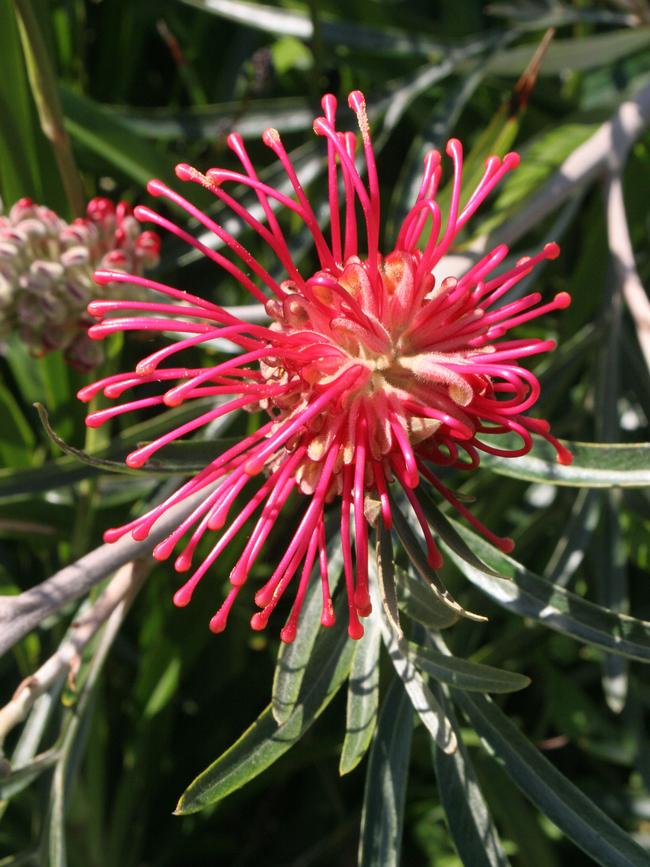
Most varieties flower from spring through to autumn, with some spot flowering during the year. There are also a number of grafted standard varieties available which make a popular choice for a focal point in the garden.
The strong straight stem of the standard grevillea is that of Grevillea robusta or the Silky Oak and it’s been chosen as the rootstock due to its extreme hardiness and ability to grow well in various soil types and climatic conditions.
Various groundcover grevilleas are then grafted on to the rootstock and will either weep down to the ground in a mushroom shape or grow out horizontally more like an umbrella or form a rounded ball shape on the standard.
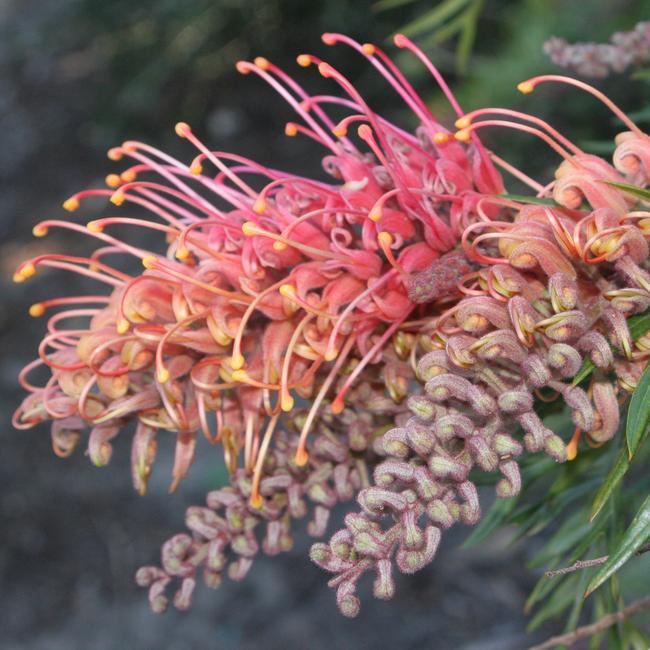
Originally published as Build a new home: Australia-proof home defying Mother Nature




